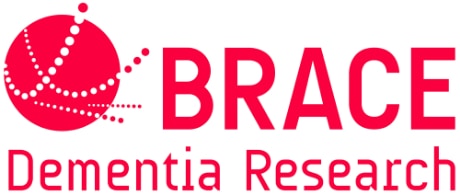Dr Claudia Metzler-Baddeley
Research Programme: Cardiff University, 2013
How do individual differences in midlife adiposity and APOE genotype as risk factors for dementia affect brain structure and cognition? A cross-sectional MRI study (Research fellowship jointly funded by the Alzheimer’s Society
See glossary at bottom of page for definition of underlined words.
Summary
Obesity is known to be a risk factor for Alzheimer's disease and other dementia related diseases but it is not known why. This increased risk may be due to microstructural changes in the fornix, a bundle of nerves connecting the hippocampus to other parts of the brain. In this project, MRI scans of participants (obese and normal weight) will be taken to look at the specific properties of nerve fibres in the fornix. This, coupled with neuropsychological tests and blood tests will allow a complete picture of the effect of obesity on dementia to be built up. This research may help identify early warning signs of dementia years before the symptoms start to present themselves.
What do we already know?
Dementia and obesity are amongst the largest public health problems in the Western World. There is accumulating evidence that being overweight in midlife increases the risk of developing dementia later, but it is not known why. This group has recently found evidence that being overweight is linked to microstructural changes of the fornix, a bundle of nerves connecting the hippocampus to other parts of the brain. The hippocampus is a brain area which has roles in learning and memory, and is affected early in Alzheimer’s disease. The relationship between variation in midlife body fat and changes in brain structure is not well understood and it remains unclear whether genetic risk for dementia influences this link.
What is this project trying to find out?
This project is studying how obesity and genetic risk of dementia (carrying APOE ε4) affect brain structure and mental functions in midlife, many years before dementia symptoms develop.
How will they do this?
Body mass index and measurement of abdominal fat tissue using MRI scans will be used to categorise subjects into the groups lean, overweight and obese. Subjects will be screened for their APOE genotype, to determine their genetic risk of developing Alzheimer’s disease. MRI scans will be taken to look at the structure of the brain, including specific properties of nerve fibres of the fornix. Mental functions including memory, attention and problem solving – known to be affected in APOE ε4 carriers and late onset Alzheimer’s disease - will also be performed to test the functional significance of potential brain changes. Finally participants’ bloods will be analysed for markers of inflammation and hormonal changes that may inform about the potential mechanisms underpinning the link between obesity and brain health.
Why is it important?
The results of this study will aid our understanding of brain changes across the lifetime that may contribute to the development of dementia in older age. It may also contribute to identifying early warning signs many years before the onset of any clinical symptoms at an age where disease prevention is most promising. If we know how being overweight can increase the risk of dementia, this means we may be able to target this link in future to help prevent dementia.
Glossary
Risk factor – Behaviours that may increase your chances of getting a disease.
Microstructural changes – Changes on the very small scale (eg. the micrometre scale)
APOE ε4 – A version of the APOE gene which is associated with the increased risk of Alzheimer’s disease.
Further information
Please click here for more information about the work of Dr Claudia Metzler-Baddeley
Share this page
